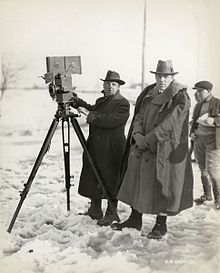
By Shawn Swanky
No filmmaker sets out to make a bad movie.
When a movie is bad, then, it is usually not from a lack of trying. Instead, it is more the product of a disconnect between how a filmmaker thinks an audience will respond and what actually works. Of course, some movies do seem bad at first but become loved later. But that is a topic for another article.
Below is a list of some common filmmaking techniques that are surefire ways to lose audience interest.
1) Black screen with voice audio but no visual.
Intent: Focus the audience’s attention on a specific emotion or thought, withholding all other stimulation. Often used at the very beginning of a movie.
Reality: Audiences check their phones and wonder,“Has the movie started?” Without context, audiences are uncertain why they should care or how to place this information in their minds. It works out better, usually, to seduce an audience than to let it feel ambushed.
2) Quick cutting in action scenes.
Intent: Make the scene exciting by ramping up the stimulation.
Reality: The audience loses sense of time and space. There is nothing exciting about relentless blurry images and loud sound. Instead of becoming involved, the audience will soon tune out. Minds wander for a lack of story information.
3) Shots where a speaking actor has no eye-room.
Intent: An attempt to be stylish or create dramatic tension.
Reality: The audience wonders why 75% of the screen is not being used.
4) Jumping back and forth in time.
Intent: Recently, this seems a product of Bob McKee’s theory that stories must have alternating scenes of positive and negative values. When writers can’t do this organically in a linear story, sometimes they do it by artificially jumping back and forth in time.
Reality: Audience emotional involvement is linear. Every time you break the story timeline, the audience becomes disengaged and, eventually, frustrated. It is hard work to focus one’s mind on what one needs to know from earlier in the timeline and then to apply it in a story’s present time. Unless it is“Memento”and the time thing is part of the story. But notice how Nolan took away“the work”through repetition.
5) Shot of an actor’s back while talking.
Intent: Heighten the audience’s focus on what a character is saying.
Reality: The audience always wants to see an actor’s face, reaction of the person being addressed, or action relevant to the actor’s speech. Otherwise, the audience thinks the dialogue is not important and its attention soon drifts. Seeing a speaker’s whole“facial body language” is an important part of communication.
6) Ambiguity about which character the movie is about.
Intent: Allow the audience to invest in characters with whom they most identify. Or to set up the audience for a clever, or surprising at least, story shift near the end of the second act.
Reality: Movies usually work best when there is one main character. It is the default nature of the medium. Sometimes marketing creates the wrong impression about which character a movie is about. Sometimes the filmmaker doesn’t really know. Without exception, however, movies end with one character’s fate as most important. If the identity of this character isn’t clear from the start, audiences can feel cheated or angry that they invested care and attention in the wrong character. It is never a good idea to ambush the audience.
http://www.shawnswanky.com/articles/filmmaking-tips/6-filmmaking-techniques-that-audiences-hate/
No comments:
Post a Comment